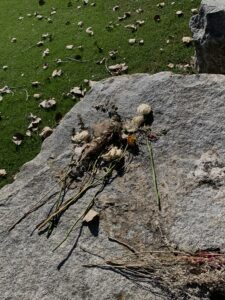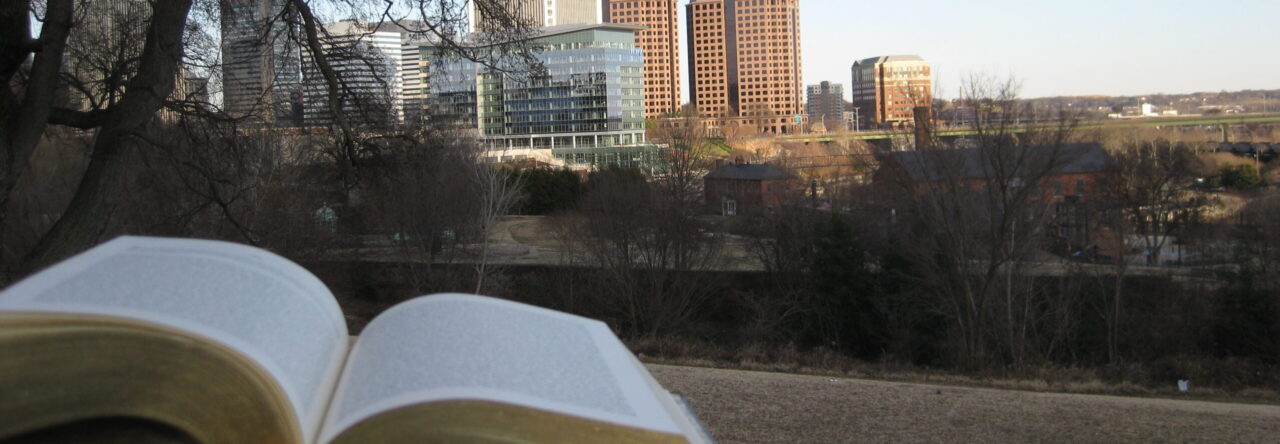For the first essay, are we able to use our writing from another class and talk about how it helped us learn that material as well?
‘Learning’ itself seems like such a vague term as used in the first prompt of the midterm portfolio reflective essay. “Experienced learning,” “learning moments,” “how this represents learning,” and “define and categorize the learning” are all used in the same paragraph and paint what learning is to be some concept open to interpretation. If this is the case, and we should in fact explore what learning means to us through writing an essay, then that’s good enough of an answer to me. If not, could the explanation of what we should really include in the essay be narrowed down a bit?
The photos I have included are of the obelisk on the slave burial grounds as well as the inscription at the base of it. I chose to include this because of how it caught my eye both the obelisk itself as well as its description. It seemed out of place when I first saw it but after reflecting on it I’ve thought about the fact that the grounds themself are out of place as they shouldn’t have to exist. When I was reading the description I noticed that Africa was spelled with a K and after looking into it I found that “reverting to the “K” spelling empowered people of African descent and created the foundation for a common identity between them.” I feel that this obelisk does a good job of standing out and making people understand why it’s there.
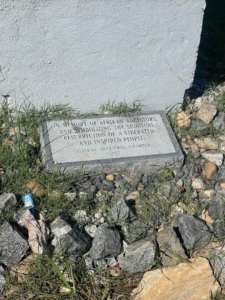
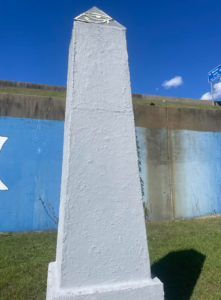
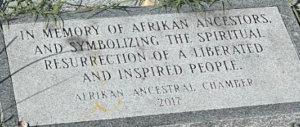
Seeing Lumpkin’s slave jail and the slave burial grounds was very different than when we saw the burial site on our campus. It was much larger and made me more aware of the fact that these were all over and now it is unknown where many of them are now. On my notecard, I wrote about how I thought that it would be similar to the site on campus but with more information.
After arriving we split into two groups to observe where the slave jail once stood as well as the former home of Emily Winfree and the field of the burial grounds. I was in the group that looked at the Winfree cottage and where Lumpkin’s was. Reading about the cottage I learned how Ms. Winfree was one of the thousands of black Richmonders who became free and was able to live in a thriving African-American community. Seeing where Lumpkins once stood was informative because it made me learn how many places like this used to scatter the area and now the majority of them are just buried under the city’s infrastructure.
Moving through the underpass we learned of the execution of General Gabriel and we saw some information signs under the trees where this occurred. The field was much larger than I thought and hearing that it used to be a parking lot was very interesting. There was also an obelisk that was made in memory of “Afrikan Ancestors and symbolizing the spiritual resurrection of a liberated and inspired people” -Afrikan Ancestral Chamber 2017. Leaving the grounds I wrote about how the size of the burial grounds surprised me and how the jail most likely still has part of its grounds under the highway.
I found it interesting how the slave jail was so close to the main house and hotel/tavern. It seems almost psychopathic for people to be enjoying themselves at the tavern or relaxing in the house knowing the horrible conditions the slaves are living in only a few feet away. How could the white slave owners not have a shred of humanity even as the slaves were suffering in Lumpkin’s Jail? The more we learn about Richmond’s history and the history of slavery in this country, the more I’m starting to see that slavery was not just a system to provide labor. It was a system for white people to express their complete hatred for black people.
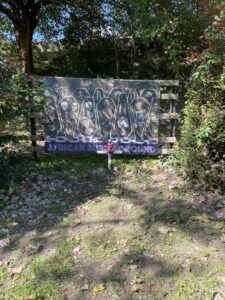
This picture showcases a mural of sorts that serves as a memorial for the slave burial ground. I think the pictures of skeletons are very haunting and also evoke a sadness as well because these people were forgotten about for so long. This spot and the whole area in general was an effective place for reflection because of its atmosphere. At this spot particularly, I found myself just standing there and staring at this piece of artwork for a pretty long time because I just couldn’t fathom these people’s lives and experiences. I feel like immersing myself in this place was a lot more effective in terms of education about slavery than much of my prior study on the subject.
Question:
- For the first prompt, are there any parameters for what we can say we learned through writing? Does it have to be something we learned about writing itself or can it be anything?
- How long should our essays be?
I have a couple questions about the midterm portfolio. Do we have to write the two essays on two separate documents, or can we squish it all into one document? Also, how would we separate the two essays if it is all in one document? My last question is if we have to do in-text citations if we’re just quoting ourselves.
Some of you have already been posting your photo from Thursday’s trip–Great! I went ahead and added it to the assignment for Tuesday, which means you have 2 posts to do for class that day. It doesn’t have to be a long post. Just capture your main take-aways and we’ll discuss in class. **NOTE: please categorize your trip post under “experiential reflections”.
About the planned museum: this article is a good update about what is going on, though I wonder what is happening now, a year later. Also, here is the website kept up by the organization defending the site.
I took this picture in front of the first monument we saw when we arrived at the burial ground. These flowers were left on a rock that faces a tree where historians think hangings took place. There is no way to know the number of people who were killed there and how many were buried just feet away, but it is still extremely important to show that they have not been forgotten. Seeing the flowers placed there reminded me of how it is common to leave flowers at headstones, but unfortunately, there are no gravestones or markers for the people buried at the site. I think whoever left the flowers meant to honor those who have passed and show that they are still being remembered. This stood out to me because the people buried at the site were forgotten at one point, but that is changing. 